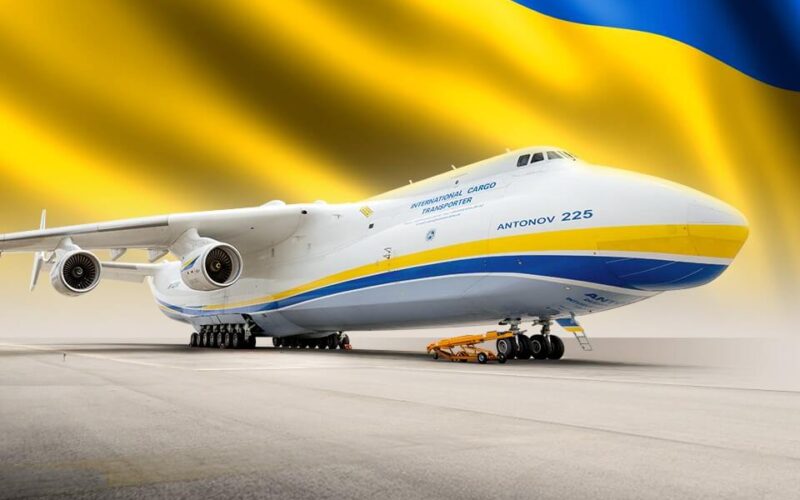Just as the global aviation industry seemed to be recovering from the COVID-19 pandemic, it was struck by another challenge when Russia invaded Ukraine. War has been raging for one month now, resulting in the deaths of thousands of people, while millions have fled their homes.
AeroTime takes a look at the major developments in aviation over the past month, since the invasion began on February 24, 2022.
Air connections shut down
As tensions escalated between Russia and Ukraine in early February 2022, some major carriers started suspending flights to the capital city of Ukraine, Kyiv. Among them, Air France-KLM, Vueling, and Lufthansa Group airlines, including Lufthansa (LHAB) (LHA), Swiss and Austrian Airlines, all halted flights to Kyiv-Boryspil International Airport (KBP) because of the situation.
By February 23, 2022, only the country’s flag carrier, Ukrainian International Airlines, Turkish Airlines, Latvian carrier airBaltic, and low-cost carriers Ryanair and Wizz Air were still operating flights to and from Ukrainian airports.
On February 24, 2022, as bombs hit Boryspil International Airport, Ukraine closed its airspace to commercial operations. In the following days, multiple civilian airports were targeted by Russian armed forces as a way to isolate Ukraine from military and humanitarian support.
The European Union Aviation Safety Agency advised air operators to “exercise extreme caution and avoid using the airspace within 100 nautical miles [185 kilometers – ed. note] of the Bielorussian and Russia-Ukraine border.”
Now, anyone looking at a flight tracking site can’t help but notice the large empty space over Ukraine.
Courtesy of Flightradar24.com
The unique An-225 Mriya destroyed
Located in the vicinity of Ukraine’s capital city Kyiv, Hostomel Airport was attacked on the first day of the invasion. The alleged goal of Russian paratroopers sent onto the site was to establish a bridgehead for more troops to be flown in.
During the battle for Hostomel’s control, the Antonov An-225 Mriya was critically damaged. The Mriya was not only unique, but as the world’s largest and most powerful aircraft it offered unrivaled capabilities in terms of transportable volume and mass, thus making it an invaluable loss for the air cargo industry.
The manufacturer Antonov has since launched a fundraising appeal to help rebuild the aircraft.
Lengthy diversions to avoid Russian airspace
One after the other, Moldova, the United Kingdom, and the European Union banned all Russian airlines from their airspace as part of sanctions against Russia for the invasion.
In retaliation, Russia confirmed it was closing its airspace to 36 countries.
This impacted the Asian routes of most European airlines. Among them, Finnair warned that the closure would have an enormous impact on its operations. Indeed, the core business of the Finnish air carrier is connecting European and Asian destinations via its hub in Helsinki, meaning its key routes all pass over Russian airspace.
Adding to planning challenges for airlines in European airspace, the region’s aviation safety regulator has warned of increased GPS jamming incidents linked to the conflict. This has meant some aircraft have had to change routes or even divert.
Support cut off to Russian aviation
Meanwhile, sanctions have raised questions about how Russia can keep its planes in the air. Boeing and Airbus both suspended support for aircraft operated by Russian airlines, namely halting parts provision, maintenance, and technical support services.
This has prompted Russia to revive domestic aircraft programs, such as the Soviet-era Ilyushin Il-96 and the Tupolev Tu-214, as well as put more efforts into the Sukhoi Superjet 100.
It seems likely that Russia will soon have to start cannibalizing aircraft for spare parts. Several reports indicate that low-cost carrier Pobeda, a subsidiary of the Aeroflot group, is reducing its operating fleet of Boeing 737-800 aircraft down to 25 from 41. The 16 aircraft are set to remain grounded until the end of 2022 and will be used to provide spare parts in case maintenance is needed on the active fleet.
Commercial aviation was not the only business affected by the crisis. The Canadian business jet manufacturer Bombardier said it has canceled an undisclosed number of executive jet orders from Russian customers.
Leased aircraft held in Russia
Meanwhile, sanctions prohibiting the sale or lease of aircraft to Russian companies, have hit EU-based aircraft lessors hard. While they have cancelled contracts and demanded the return of their assets, getting the planes out of Russia is proving another matter.
The fleets of Russia’s three largest airlines are mainly comprised of Airbus and Boeing manufactured aircraft, with a limited number of indigenous jets in the form of the Sukhoi Superjet and a handful of Soviet-era Tupolev airliners. According to aviation consultancy firm IBA, Russian companies operate at least 589 aircraft affected by the sanctions, a fleet with an estimated worth of $10 billion.
To prevent their loss, the government is therefore re-registering some of the aircraft located in the territory of the Russian Federation, effectively nationalizing them. Russian airlines are also avoiding flying to destinations outside of Russia using leased jets, to prevent them from being seized by leasing companies while on the ground in another country This all means that aircraft are unlikely to have been returned by March 28, 2022, the deadline set by the EU.

